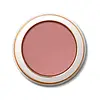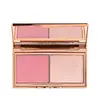What's inside
What's inside
 Key Ingredients
Key Ingredients

 Benefits
Benefits

No benefits
 Concerns
Concerns

 Ingredients Side-by-side
Ingredients Side-by-side

Talc
AbrasiveDimethicone
EmollientMica
Cosmetic ColorantNylon-12
Octyldodecyl Stearoyl Stearate
EmollientZinc Stearate
Cosmetic ColorantSilica
AbrasiveCaprylyl Glycol
EmollientPolymethyl Methacrylate
Hdi/Trimethylol Hexyllactone Crosspolymer
Trimethylsiloxysilicate
EmollientHexylene Glycol
EmulsifyingLauroyl Lysine
Skin ConditioningTin Oxide
AbrasivePhenoxyethanol
PreservativePotassium Sorbate
PreservativeCI 15850
Cosmetic ColorantCI 15985
Cosmetic ColorantCI 19140
Cosmetic ColorantCI 77007
Cosmetic ColorantCI 77491
Cosmetic ColorantCI 77492
Cosmetic ColorantCI 77499
Cosmetic ColorantCI 77742
Cosmetic ColorantCI 77891
Cosmetic ColorantTalc, Dimethicone, Mica, Nylon-12, Octyldodecyl Stearoyl Stearate, Zinc Stearate, Silica, Caprylyl Glycol, Polymethyl Methacrylate, Hdi/Trimethylol Hexyllactone Crosspolymer, Trimethylsiloxysilicate, Hexylene Glycol, Lauroyl Lysine, Tin Oxide, Phenoxyethanol, Potassium Sorbate, CI 15850, CI 15985, CI 19140, CI 77007, CI 77491, CI 77492, CI 77499, CI 77742, CI 77891
Talc
AbrasiveOryza Sativa Starch
AbsorbentMica
Cosmetic ColorantDimethicone
EmollientOctyldodecyl Stearoyl Stearate
EmollientAluminum Hydroxide
EmollientZinc Stearate
Cosmetic ColorantCaprylyl Glycol
EmollientPhenoxyethanol
PreservativeDimethiconol
EmollientHexylene Glycol
EmulsifyingIsononyl Isononanoate
EmollientDimethicone/Vinyl Dimethicone Crosspolymer
Skin ConditioningPolymethylsilsesquioxane
Silica
AbrasiveTrimethylsiloxysilicate
EmollientCI 77891
Cosmetic ColorantIron Oxides
CI 19140
Cosmetic ColorantCI 15985
Cosmetic ColorantCI 15850
Cosmetic ColorantCI 73360
Cosmetic ColorantSqualane
EmollientDiisostearyl Malate
EmollientBoron Nitride
AbsorbentHdi/Trimethylol Hexyllactone Crosspolymer
Zea Mays Starch
AbsorbentEthylhexylglycerin
Skin ConditioningMaltodextrin
AbsorbentTin Oxide
AbrasiveCI 75470
Cosmetic ColorantTalc, Oryza Sativa Starch, Mica, Dimethicone, Octyldodecyl Stearoyl Stearate, Aluminum Hydroxide, Zinc Stearate, Caprylyl Glycol, Phenoxyethanol, Dimethiconol, Hexylene Glycol, Isononyl Isononanoate, Dimethicone/Vinyl Dimethicone Crosspolymer, Polymethylsilsesquioxane, Silica, Trimethylsiloxysilicate, CI 77891, Iron Oxides, CI 19140, CI 15985, CI 15850, CI 73360, Squalane, Diisostearyl Malate, Boron Nitride, Hdi/Trimethylol Hexyllactone Crosspolymer, Zea Mays Starch, Ethylhexylglycerin, Maltodextrin, Tin Oxide, CI 75470
Ingredients Explained
These ingredients are found in both products.
Ingredients higher up in an ingredient list are typically present in a larger amount.
Caprylyl Glycol is a humectant and emollient, meaning it attracts and preserves moisture.
It is a common ingredient in many products, especially those designed to hydrate skin. The primary benefits are retaining moisture, skin softening, and promoting a healthy skin barrier.
Though Caprylyl Glycol is an alcohol derived from fatty acids, it is not the kind that can dry out skin.
This ingredient is also used as a preservative to extend the life of products. It has slight antimicrobial properties.
Learn more about Caprylyl GlycolCi 15850 is the pigment color red. It is an azo dye and created synthetically.
Azo dyes need to be thoroughly purified before use. This allows them to be more stable and longer-lasting.
This ingredient is common in foundations, lipsticks, and blushes. This color is described as brown/orangey red.
It has many secondary names such as Red 6 and Red 7. According to a manufacturer, Red 6 usually contains aluminum.
Learn more about CI 15850Ci 15985 is a dye made from petroleum. It is synthetically created and approved by the FDA for use in foods and cosmetics.
The color of this dye is orange/yellow.
This ingredient can be found in makeup, sun care, and skincare.
Learn more about CI 15985CI 19140 is also known as Tartrazine. Tartrazine is a synthetic dye used in cosmetics, foods, and medicine to add a yellow color.
Tartrazine is created from petroleum and is water-soluble.
Some people may experience allergies from this dye, especially asthmatics and those with an aspirin intolerance.
Learn more about CI 19140Ci 77891 is a white pigment from Titanium dioxide. It is naturally found in minerals such as rutile and ilmenite.
It's main function is to add a white color to cosmetics. It can also be mixed with other colors to create different shades.
Ci 77891 is commonly found in sunscreens due to its ability to block UV rays.
Learn more about CI 77891Dimethicone is a type of synthetic silicone created from natural materials such as quartz.
What it does:
Dimethicone comes in different viscosities:
Depending on the viscosity, dimethicone has different properties.
Ingredients lists don't always show which type is used, so we recommend reaching out to the brand if you have questions about the viscosity.
This ingredient is unlikely to cause irritation because it does not get absorbed into skin. However, people with silicone allergies should be careful about using this ingredient.
Note: Dimethicone may contribute to pilling. This is because it is not oil or water soluble, so pilling may occur when layered with products. When mixed with heavy oils in a formula, the outcome is also quite greasy.
Learn more about DimethiconeThis ingredient is a powder used to improve texture, slip, and give products a silky texture.
Hexylene Glycol is a surfactant. Glycols are a class of alcohols. Hexylene Glycol is a surfactant and emulsifier.
As a surfactant, Hexylene Glycol helps gather dirt and oil on your skin to be washed away.
As an emulsifier, Hexylene Glycol helps keep water and oil together. This prevents them from separating in a product. Hexylene Glycol also thins out the texture of a product by lessening viscosity.
Hexylene Glycol has a small molecular weight.
Learn more about Hexylene GlycolMica is a naturally occurring mineral used to add shimmer and color in cosmetics. It can also help improve the texture of a product or give it an opaque, white/silver color.
Serecite is the name for very fine but ragged grains of mica.
This ingredient is often coated with metal oxides like titanium dioxide. Trace amounts of heavy metals may be found in mica, but these metals are not harmful in our personal products.
Mica has been used since prehistoric times throughout the world. Ancient Egyptian, Indian, Greek, Roman, Aztec, and Chinese civilizations have used mica.
Learn more about MicaOctyldodecyl Stearoyl Stearate is created from stearic acid.
It is an emollient and thickens the lipid (oil) portion of a product. Due to its emollient properties, it may not be fungal-acne safe.
Phenoxyethanol is a preservative that has germicide, antimicrobial, and aromatic properties. Studies show that phenoxyethanol can prevent microbial growth. By itself, it has a scent that is similar to that of a rose.
It's often used in formulations along with Caprylyl Glycol to preserve the shelf life of products.
Silica, also known as silicon dioxide, is a naturally occurring mineral. It is used as a fine, spherical, and porous powder in cosmetics.
Though it has exfoliant properties, the function of silica varies depending on the product.
The unique structure of silica enhances the spreadability and adds smoothness, making it a great texture enhancer.
It is also used as an active carrier, emulsifier, and mattifier due to its ability to absorb excess oil.
In some products, tiny microneedles called spicules are made from silica or hydrolyzed sponge. When you rub them in, they lightly polish away dead skin layers and enhance the penetration of active ingredients.
Learn more about SilicaTalc is a clay mineral. It helps absorb moisture and improve the texture of products. Like other types of clay, Talc can have a slight exfoliating effect on skin. Talc can be added to increase the volume of products.
Some Baby powders are made by combining talc with corn starch. The word "talc" comes from Latin and originates from Arabic. Talc is a mineral commonly found throughout the world.
If you have any concerns about using talc, we recommend checking out the FDA's official page.
Learn more about TalcTin Oxide is an inorganic oxide used to add opacity and volume to a product. In nature, it is already found in mineral form. The main ore of tin is an opaque and shiny mineral called casseterite.
Tin Oxide helps remove translucency in a product, or make it more opaque. Besides adding opacity, tin oxide is used for bulking to add volume.
This silicone is an emollient. Emollients create a thin film on the skin to prevent moisture from escaping.
It is not soluble in water and helps increase water-resistance in products.
According to a manufacturer, it can blend seamlessly with silicone oils, such as Cyclopentasiloxane.
Learn more about TrimethylsiloxysilicateZinc Stearate is the metal salt of stearic acid. It is a white solid used to bind, thicken, and lubricate products.
This ingredient is common in powder makeup, where it helps keep the powder together.
Zinc Stearate is hydrophobic and repels water.
This ingredient can be sourced from non-animal or animal sources. It is best to reach out to the brand to see where they source this ingredient from.
Learn more about Zinc Stearate